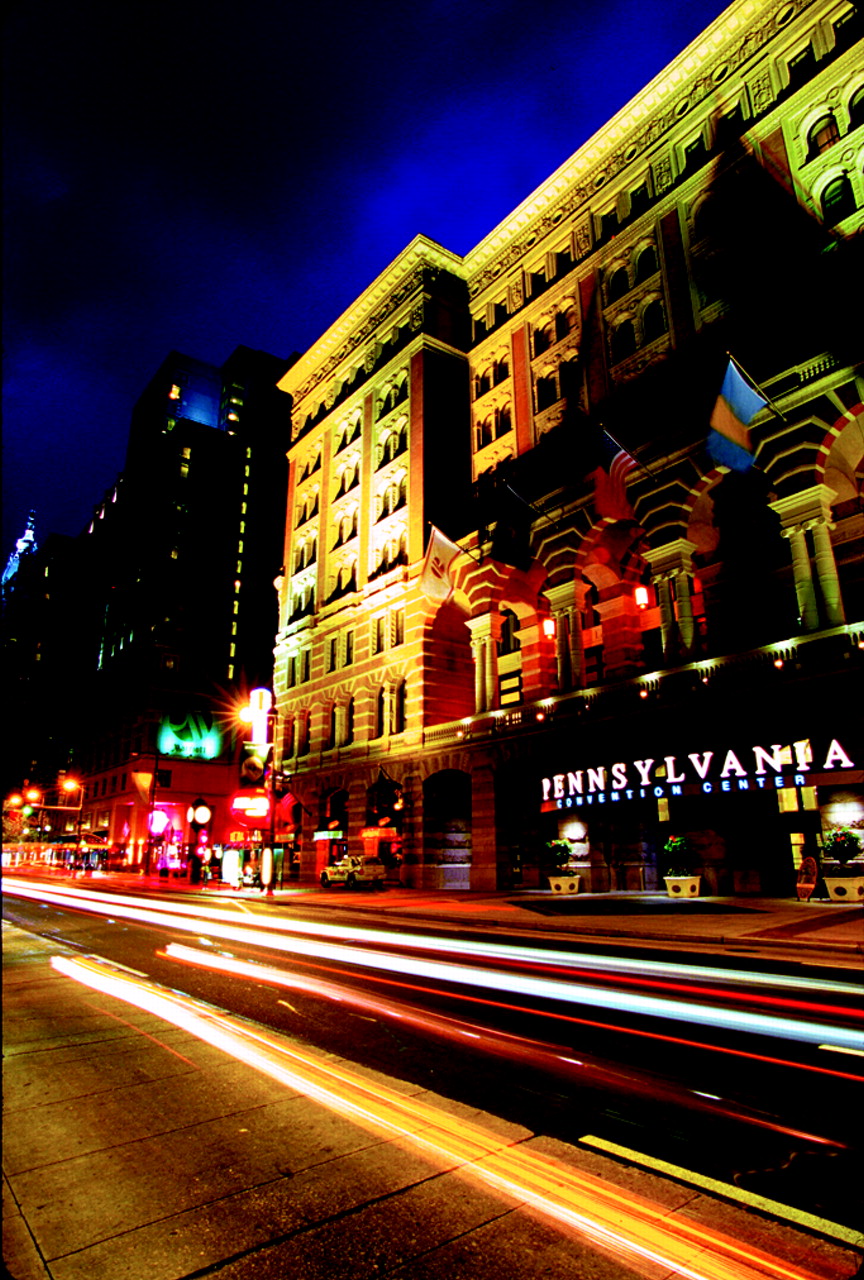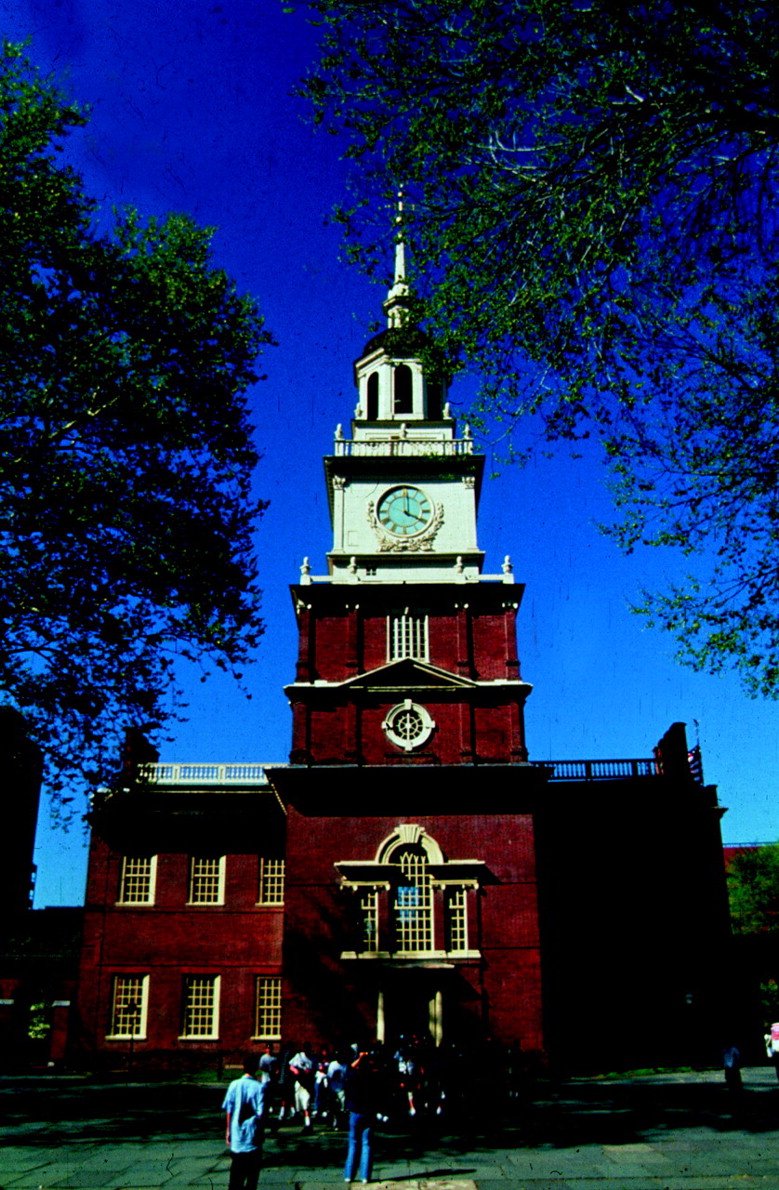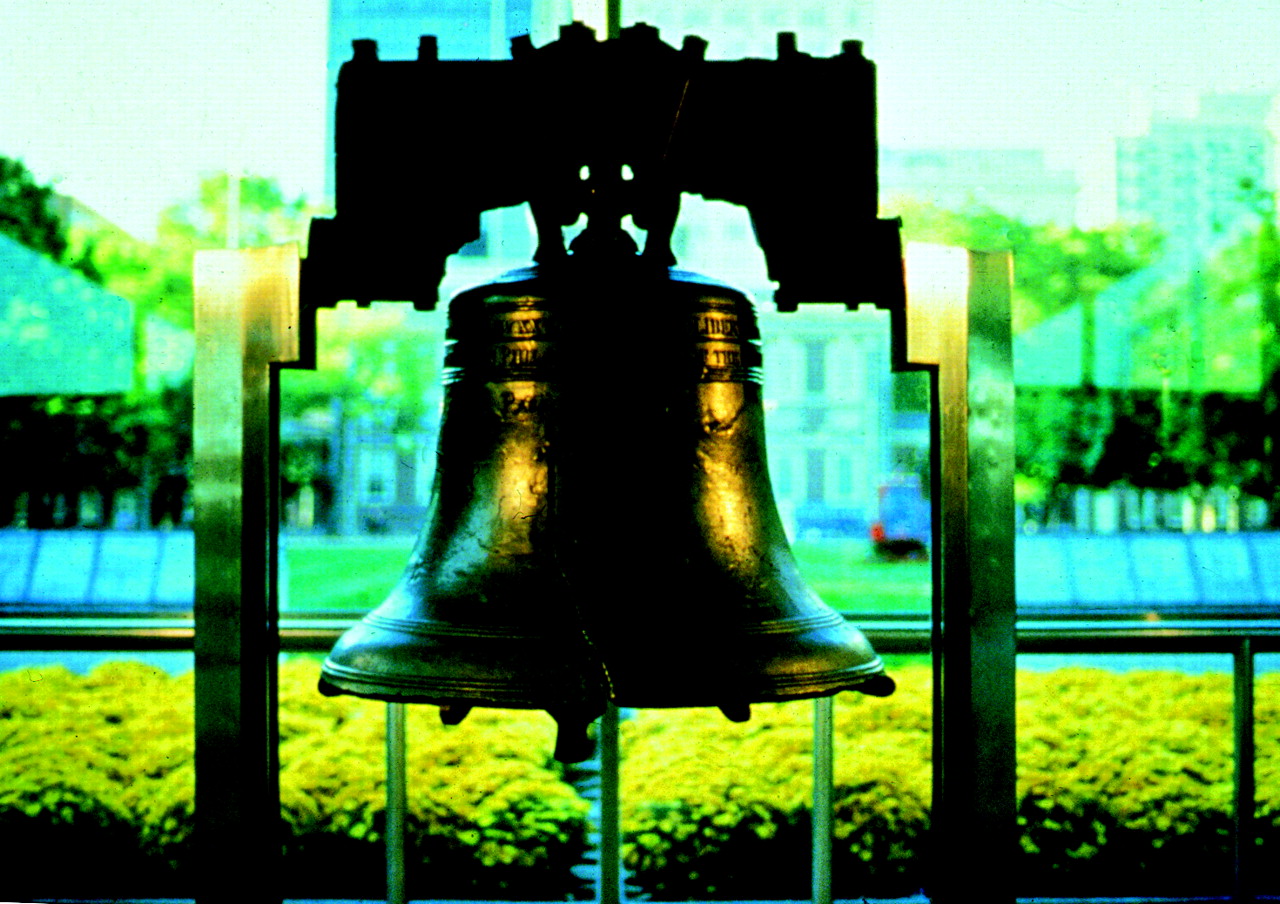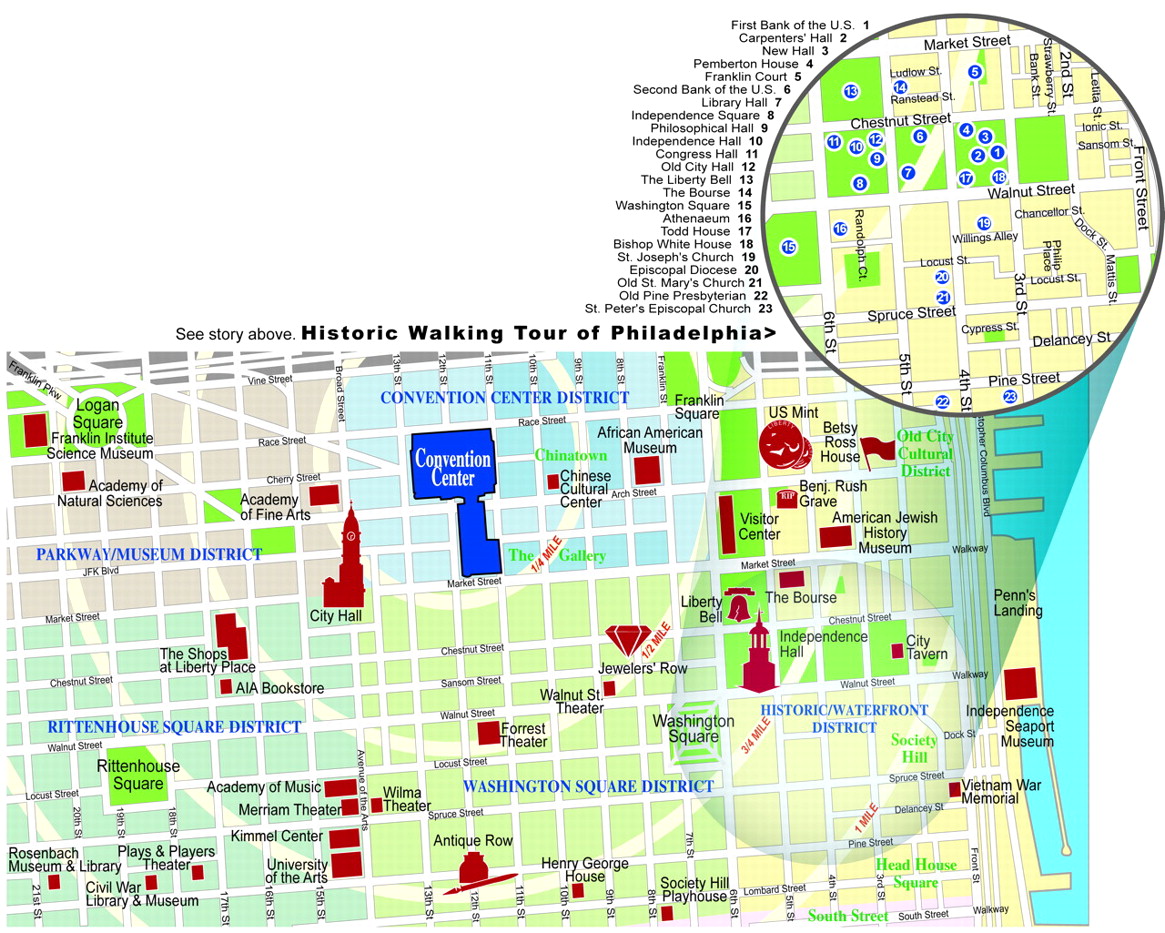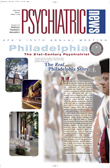American history buffs will definitely want to take a walking tour of Philadelphia. Not only are many of the historic sites associated with the birth of this country located in close proximity, but also the grid pattern of the streets and flat terrain add ease and pleasure to such exploration.
Begin your tour at the Visitor Center in Independence National Historical Park at Sixth and Market streets.
From the Visitor Center, proceed to the First Bank of the United States, a superb example of federal architecture. Built in 1795, it is believed to be the oldest surviving bank building in America. Dealing with 13 different currencies hindered commerce and travel among states so Alexander Hamilton proposed a single bank for loans and deposits.
To the right, a walkway leads to Carpenters’ Hall, which was built in 1773 as a guildhall for carpenters and used as a meeting place in 1774 for the First Continental Congress.
Just north of this hall is New Hall, a modern copy of a 1791 structure built to be rented by the Carpenters’ Company. When the federal government was provisionally based in Philadelphia, this space served as the headquarters for the first War Department. The building now houses the Marine Corps Museum and displays swords, uniforms, and medals.
A few steps north on Chestnut Street is a reconstruction of Pemberton House, a Georgian home built by Joseph Pemberton, a Quaker sugar and Madeira port merchant. After the Second Continental Congress cut back on British imports, Pemberton went bankrupt, and the house was razed in 1862 and reconstructed a century later. An exhibit shows the early development of the U.S. Army and Navy, and a film about the Revolutionary War plays continuously. The highlight of the second floor is a model gun deck of a frigate with instructions on maneuvering for a naval battle.
Historic Banks
The other side of Chestnut Street features a handsome collection of 19th century banks and commercial façades including the First National Bank at number 315 and the Philadelphia National Bank at number 323.
The Chestnut Street entrance to Franklin Court is nestled here. Franklin Court was once the home of Ben Franklin, and while the house is long gone, steel girders now outline its size and shape over the ground where it once stood. Also part of Franklin Court are a museum, the United States Postal Service Museum, a post office, and the Franklin Print Shop.
Walk west along Chestnut Street until you come to the Second Bank of the United States. Congress chartered the bank in 1816 for a term of 20 years to provide reliable circulating money. Andrew Jackson did not renew the bank’s charter, and the building was used as a Customs House until 1934. Now the bank serves as a gallery of portraits of early Americans painted by Peale, Sully, Neagle, Stuart, and Allston. Hours are 9 a.m. to 5 p.m. daily, and admission is $2 for persons 17 and older.
At this point, consider taking a break in the tea garden next to the holly garden in the Independence National Historical Park. Ice cream and cool drinks are available from mid-May to mid-September, from noon to 5 p.m.
More Halls
The walking tour continues just west of the Second Bank to Library Hall, a 1954 reconstruction of Benjamin Franklin’s Old Library Company.
From the library, cross Fifth Street to Independence Square, where on July 8, 1776, John Nixon read the Declaration of Independence to the public.
To your right is Philosophical Hall, the home of the American Philosophical Society, which was founded by Ben Franklin.
To your left is the trio of
Independence Hall,
Congress Hall, and
Old City Hall. Construction on Independence Hall was begun in 1732 as the Pennsylvania State House and took 21 years to complete. The project was overseen by Alexander Hamilton. Tours of Independence Hall begin about every 15 minutes.
Congress Hall and Old City Hall were built in 1787 and 1790, respectively, and were used by a combination of federal, state, county, and city governments during a fairly short period.
Across Chestnut Street between Fifth and Sixth streets lies the famous symbol of independence, the
Liberty Bell, enclosed in a glass pavilion. The bell got its name from the part it played in the colonies’ quest for freedom from Great Britain: it was rung to summon the citizenry to the first public reading of the Declaration of Independence.
Notable Houses and Churches
Named after the founder of Episcopalianism, the Bishop White House, at 309 Walnut Street, provides an interesting glimpse into how a pillar of the community lived. Todd House (1775) at Fourth and Walnut streets, named after Quaker lawyer John Todd Jr., is also worth a visit. After his death from yellow fever in 1793, Todd’s wife, Dolley, went on to marry James Madison. Tickets to tour both houses can be obtained at the Visitor Center.
The Betsy Ross House at 239 Arch Street was restored in 1937 and is distinguished by the Stars and Stripes outside. Ross is credited with sewing the original American flag of 13 stars and stripes.
Examples of Victorian architecture can be found at the Bourse, just east of the Liberty Bell. The Bourse has been renovated as a two-angled mall with a skylit atrium and a food court.
Additional historical information is available at the Web sites for Independence Hall Association at www.ushistory.org and Old City (eclectic row houses dating back to William Penn’s time) at www.oldcity.org. ▪
